NASCAR drivers fly, too
You’ve got something in common with these drivers
NASCAR is all about time. Spend less of it on the track than the other guy and you might win. Save more of it off the track and you’ll make the most of your three days off between races. (It’s often less.) For six current drivers, an airplane is the answer to saving time.
Matt Kenseth, Mark Martin, Carl Edwards, Kyle Petty, Bill Elliott, and Greg Biffle have pilot certificates. As a pilot yourself, you have more in common with them than you realize. Here are their stories, plus those of student pilot Krissie Newman, wife of driver Ryan Newman, and team owner and pilot Jack Roush.
This racing season, let’s hope a pilot wins the Sprint Cup.
Want to drive for Jack Roush?
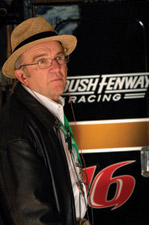 Jack Roush, owner of Roush-Fenway Racing, is a single-pilot jet owner who is impressed with driver candidates who are pilots. He has more driver-pilots on his team than any other NASCAR team. “It’s people who are interested in aviation—both in regard to being pilots and are challenged and enthused about the hardware involved—who also carry with them the interest in the hardware for the race cars,” Roush said.
Jack Roush, owner of Roush-Fenway Racing, is a single-pilot jet owner who is impressed with driver candidates who are pilots. He has more driver-pilots on his team than any other NASCAR team. “It’s people who are interested in aviation—both in regard to being pilots and are challenged and enthused about the hardware involved—who also carry with them the interest in the hardware for the race cars,” Roush said.
Roush’s near-fatal Air Cam collision with power-line support wires during a birthday celebration two years ago left his enthusiasm for aviation undamaged. “I own a mid-1940s J–3 Cub, I’ve got a North American AT–6 that was built in 1944, I’ve got a P–51B model Mustang that was built in 1943, a P–51D model Mustang that was built in 1944, a Hawker Beechcraft Premier 1A that was built in 2007 that I fly as my daily flier; we’ve got two Boeing 727-200s that we fly our race teams with, and we’ve got three more 727s that are not airworthy that we use as parts.”
His restored North American P–51 Mustangs are dedicated to the heroes of World War II. “Col. [Bud] Anderson actually had four Mustangs that carried the Old Crow motif. The third B model is the one that I just restored and completed and took to Oshkosh for the first time in 2008.”
A fun place flier
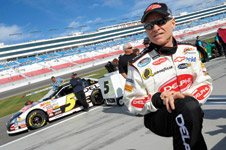 Mark Martin is a cheerleader for business aviation, yet he never flies for the $100 hamburger. “I don’t fly for fun if that’s what you mean—ever. I go places that are fun,” he said, smiling. “But no, I’m not a sport flyer. If you can be an enthusiast for business aviation, I’m as much enthused about that as a sport flyer would be about doing aerobatics. It’s weird. I am sure that’s probably not common. I have an obsessive-compulsive personality and that’s what I obsess about outside of race cars.”
Mark Martin is a cheerleader for business aviation, yet he never flies for the $100 hamburger. “I don’t fly for fun if that’s what you mean—ever. I go places that are fun,” he said, smiling. “But no, I’m not a sport flyer. If you can be an enthusiast for business aviation, I’m as much enthused about that as a sport flyer would be about doing aerobatics. It’s weird. I am sure that’s probably not common. I have an obsessive-compulsive personality and that’s what I obsess about outside of race cars.”
Martin bought his first airplane in 1992. In just three years he had his private, multiengine, and instrument ratings, and in 1995 he bought his first Cessna CitationJet (CJ) but was not yet qualified to fly it. “I moved to Florida in the fall of 1994 and in 1995 I realized that I needed to go to the race shop a lot on Tuesday. My pilot still lived in North Carolina and he commuted for the races, but midweek that didn’t make sense for me to have to drag him back and forth. So I decided I needed to get where I could do that trip.” By the end of 1996 Martin qualified for single-pilot operations in the CJ. “I admit it was an incredibly aggressive schedule,” Martin said. (He has a Cessna Citation CJ4 on order.)
Bored no longer
“I got into flying during the off season and I was somewhat bored,” Matt Kenseth said. “I wanted to find something constructive to do. I’ve always been real interested in airplanes, riding to the races and all. I thought I’d take up flying and see if I liked it.” He found a Cessna 172 and took some lessons with the pilot of his Citation 501 to “see if it was something I wanted to do.”
It was, but he didn’t find it particularly easy. “It was challenging. I wasn’t really a very great student in school so there were certain things that were hard for me to grasp and still are. Other things were pretty easy, kind of second nature. A lot of the mechanics [of flying go] with what we’ve always done [in racing]. I don’t fly home after a race. You’re in the car for three, three and a half hours. You’re hot and tired. Everybody’s rushed to get out of there. But mostly I enjoy flying to the races, to appearances, home to Wisconsin to see my family, stuff like that.”
He owns a new Mooney Acclaim and is a huge fan of its Garmin glass cockpit. “The technology is amazing. I learned to fly in a 182 that had a standard panel in it. When I got my multi I moved up and flew a [Cessna] 340 for a year and a half. When I moved into the Mooney it just amazed me, with that G1000. You know, all the situational awareness and the weather, and being able to do everything right there. I really enjoy that. You have the information at your fingertips right away.”
One each of everything
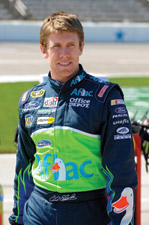 Carl Edwards wanted to be a military pilot since high school but changed direction toward racing during college. But the love of flying was never lost. He owns a Piper J–3 Cub, an Extra 300L aerobatic tailwheel aircraft, and a Cessna CitationJet.
Carl Edwards wanted to be a military pilot since high school but changed direction toward racing during college. But the love of flying was never lost. He owns a Piper J–3 Cub, an Extra 300L aerobatic tailwheel aircraft, and a Cessna CitationJet.
“I looked early on at the military planes, and the idea of flying them just seemed like it would be one of the neatest careers in the world. Until I started racing and that started taking off, my loose plan was to try to be in the military. So I got my pilot’s license while I was in high school.”
Edwards uses his CJ to commute to and from races. “Since January [2008] I’ve been flying single-pilot. I went to FlightSafety at San Antonio, and followed up with a couple of more hours training with Jim Watkins [at the Jet Flight Academy in Sanford, Florida].”
Watkins speaks highly of Edwards as a pilot, and also counts Mark Martin, Bill Elliott, and Rusty Wallace among his students. “Elliott is good. Mark Martin is the most focused guy in the world,” Watkins said. He also ferries the Dassault Falcon 50 used by John Travolta.
Edwards has a friend who wants to take a Piper Saratoga to Australia and sell it there, and Edwards plans to go along.
Happy with helicopters
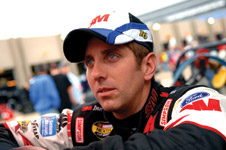 Greg Biffle’s Cessna 210 sits in the hangar most days, remembering the days when it was Biffle’s favorite. If an airplane could have feelings, Biffle’s 210 would feel jilted. “I got the helicopter bug probably two or three years ago and did about 10 hours in a [Robinson] R44 out of Lake Norman Air Park [North Carolina], and then that operation moved. I put it off for about a year, year and a half. Our schedule is so busy. Then I started looking around for a helicopter again. Bill Elliott was selling his helicopter. He had a [Bell] 206B-3 helicopter, so I bought it, got my license. Then one of the guys caught wind that I was thinking about leasing a Bell 407. Word gets around the community pretty fast. So one of the other guys that works in the garage area knew that I might be selling my 206. Before I wanted to, he came to me and was like, ‘I want to buy it. I want your helicopter.’ So I sold it a week and a half ago.
Greg Biffle’s Cessna 210 sits in the hangar most days, remembering the days when it was Biffle’s favorite. If an airplane could have feelings, Biffle’s 210 would feel jilted. “I got the helicopter bug probably two or three years ago and did about 10 hours in a [Robinson] R44 out of Lake Norman Air Park [North Carolina], and then that operation moved. I put it off for about a year, year and a half. Our schedule is so busy. Then I started looking around for a helicopter again. Bill Elliott was selling his helicopter. He had a [Bell] 206B-3 helicopter, so I bought it, got my license. Then one of the guys caught wind that I was thinking about leasing a Bell 407. Word gets around the community pretty fast. So one of the other guys that works in the garage area knew that I might be selling my 206. Before I wanted to, he came to me and was like, ‘I want to buy it. I want your helicopter.’ So I sold it a week and a half ago.
“But he wanted it that bad, and so I’m working a deal to lease a 407 and keep it in my hangar. So I have to go to ground school for three days, and then I have to do two days of flying to be checked off in the 407 so I can get on the insurance and fly it.”
Biffle finished third in the chase for the 2008 Sprint Cup; Carl Edwards finished second and Matt Kenseth eleventh.
The Petty way
Kyle Petty bought a beautiful Cessna Columbia 400 before he knew how to fly. But to pass his checkride late last fall he rented a Cessna 172. Why did he get a Columbia first? That’s the way the Pettys do things. “I didn’t grow up driving at a short track or a dirt track. I grew up going to Cup races with my father [Richard Petty]. When I started, the first place he sent me was Daytona. He said, you’re going to Daytona if you’re going to learn to drive. That made sense to me. That was what Richard Petty said. That had to be right. I go to Daytona, and I won my first race.
“When we started looking at aircraft, I looked for whatever was the most technically advanced. So a composite aircraft with a glass cockpit was what the Columbia featured, and that was where I went. To learn in that environment, to learn with a joystick, to learn with a glass cockpit, to learn with a GPS and the weather programs they have on the Garmin—and then to jump back and sit in a 172—you think, My gosh, they’ve come a long way. To me it wasn’t as much foreign as it was antiquated.”
“It’s funny when you look at motorsports and look at the number of drivers that fly themselves. They look at it as their opportunity to get away from 200,000 people, to get to an airport and fly a Cessna or Mooney or Columbia or whatever it may be. It’s that little bit more freedom to be able to spend more time with your family.”
Grass-roots aviator
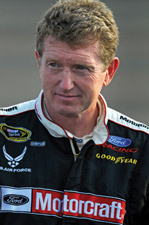 Bill Elliott has owned enough airplanes to fill a used-airplane lot, and started out the way most of us did—by taking a demonstration ride at the local airport. “I took a lesson; they flew me around the pattern one time. So I went back and started taking lessons. I was able to go at it pretty aggressively, and I got my pilot’s license in January of ’77. In 1982 or 1983 I bought a Cessna Cardinal RG. I flew it for a little while and got my instrument rating, and then I bought a Cessna 210.
Bill Elliott has owned enough airplanes to fill a used-airplane lot, and started out the way most of us did—by taking a demonstration ride at the local airport. “I took a lesson; they flew me around the pattern one time. So I went back and started taking lessons. I was able to go at it pretty aggressively, and I got my pilot’s license in January of ’77. In 1982 or 1983 I bought a Cessna Cardinal RG. I flew it for a little while and got my instrument rating, and then I bought a Cessna 210.
“After that I bought a [Piper] Cheyenne II and kept it for six years. Then I sold it and bought a [Cessna] Conquest II and kept it for six years. Then I got into some Citation stuff and had a straight Citation II, then I had an SII, and then I bought a CJ2. I kept it for several years and then I sold it. I backed up to just a straight CJ. I had a friend who wanted the CJ so I sold it and bought another Conquest II, and that’s what I have now. I love the Conquest II. I’ve got an R44 helicopter I fly. I’ve been helicopter rated since late ’89. I’ve had some [Bell] JetRanger stuff. I just like an R44. It’s a simple aircraft. I think Frank [Robinson] did a really good job with that aircraft. It just seems to work well for what I do. Then I’ve got another Cardinal RG that I fly, and I’ve got an Extra 300.”
Flying’s for the dogs
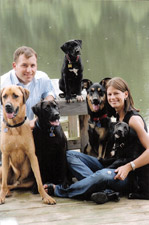 Krissie Newman is not a driver, but she’s on the circuit with her husband, driver Ryan Newman, and she attends every race as licensing and marketing contract manager. Watching helicopters arrive and depart the infield inspired her to take helicopter lessons, and she’s about ready to solo.
Krissie Newman is not a driver, but she’s on the circuit with her husband, driver Ryan Newman, and she attends every race as licensing and marketing contract manager. Watching helicopters arrive and depart the infield inspired her to take helicopter lessons, and she’s about ready to solo.
“Time has been my biggest challenge. It’s hard working during the week and then trying to carve out time to do your studies, get your flight time in, and learn what you are doing and really be able to focus on it.”
Helping motivate her training is her work through The Ryan Newman Foundation. Their home has become an underground railroad for dogs in trouble, and one day her strays will fly with her to new homes.
“We’re very big in animal welfare and in spaying and neutering, and trying to get Humane Societies the support they need. But we also have a project called the Humane Alliance that has a national spay/neuter response team that goes out to different states and counties and helps open spay/neuter clinics. And then, when I get my helicopter license, I can do animal transport,” she added.


